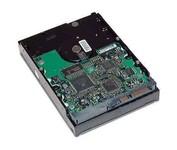Products reviews
Hewlett Packard PV943UT (500 GB)$139.00 to $230.00
Tags:hewlett, packard, pv943ut, 500, gb, | Seagate Cheetah 10K.6 (36.7 GB)$49.00 to $236.00
Tags:seagate, cheetah, 10k.6, 36.7, gb, |
Hewlett Packard 432095-B21 (72 GB)

The Hewlett Packard (432095-B21) 72 GB SAS Hard Drive is fully compatible with PC systems.The Hard Drive connect by: SAS for Internal utilization. Spinning up to 15000 RPM and offering capacity as large as 72 GB
Seagate Cheetah 10K.6 (36.7 GB)

The Cheetah 10K.6 is Seagate's sixth-generation 10K RPM high performance, high capacity disk drive. With the fastest interfaces, the highest reliability and the most mature product design, the Cheetah 10K.6 enables the lowest ownership cost. In data intensive environments, increasing the capacity per disk drive lowers ownership costs by deploying fewer systems that use less cubic feet of space requiring less infrastructure such as cabinets, HBAs and less wattage of power.Minimize
Fujitsu MAT3147NC (147 GB)

Fujitsu's latest generation of Enterprise SCSI Hard Disk Drives offer capacities of up to 300GB in a 1-inch high, 3.5-inch form factor. The MAT SCSI series is the latest generation Hard Disk products from Fujitsu offering low profile, high speed and high capacity to high performance enterprise computing applications.
Hewlett Packard 375861-B21 (72 GB)

Serial Attached SCSI (SAS) is the logical evolution of SCSI, including its long-established software advantage and the Serial ATA (SATA) electrical and physical connection interface. With enterprise storage requirements escalating and becoming more complex, factors such as larger capacity, greater density, security, scalability and accessibility are more critical than ever. Enterprise data centers must be online all the time, fulfill requests from numerous users simultaneously, allow for constant growth and expansion and be maintained while in operation. Serial Attached SCSI meets all these demands while providing the highest performance.Minimize
